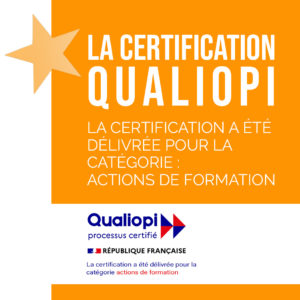Are Circus Arts a profession ?
“Trouver la rime entre la scène et la piste, entre le cirque et l’artistique : l’artiscirque, l’Arcencirque ?
Un art plus que vivant, qui bouge, qui met de l’air dans l’art, qui élève ses élèves, qui s’élance, qui les lance : fil d’Ariane et fil de fer, tremplin ou trampoline pour se former sans frime, rencontrer le public autour des« Brèves de cirque », se préparer aux concours, monter son numéro, intégrer une troupe, créer sa compagnie…
9 mètres de haut, c’est beau.
Au chaud, la grande salle des grands vols, des trapèzes, des jongles et des saltos. En dur, le chapiteau.
Les yeux dans les étoiles, flip flap et chapeau claque, mais les pieds bien sur terre : « le cirque et ses métiers »
Transmission, pédagogie, contenu, formation de formateur, un parcours reconnu.”
Philippe ROUSSEAU Extrait de la plaquette d’ARC EN CIRQUE.
 Preparatory training section: 200 students since 1997
Preparatory training section: 200 students since 1997
Preparation for entrance examinations to higher education establishments or artistic training. Having obtained full recognition by the DGCA (Directorate-General for Artistic Creation) as a preparatory circus school with the goal of its students attending university level circus school and artistic programs.

Preparatory professional, technical and artistic training programme over two years:
The programme is organised into training units with a focus on general and specific physical conditioning, acrobatics, circus techniques and artistic disciplines such as dance and expression.
Year 1: Students build on their technical and artistic skills.
Year 2: Students refine their technical and artistic skills and begin creating a technical and artistic sequence that they will use to audition for their chosen circus schools.
The programme includes optional Instructor Training for students wishing to prepare for the Circus Arts Instructor Certificate (Brevet d’Initiateur aux Arts du Cirque), awarded by the French Federation of Circus Schools.
A detailed description of the programme content and entry requirements can be downloaded.
Artistic training section: 153 students since 1997
“Circus and Movement Performer” artistic training programme: direct entry to the profession.

Three-year professional training programme:
Arc en Cirque offers a training programme leading to the Level-V “Circus and Movement Performer” certification recorded in the French national register of professional certifications (RNCP).
Year 1: Students build on their technical and artistic skills and define their creative project. They showcase the development of their work throughout the year in front of a live audience.
Year 2: Students go through the creation process and perform their work in public on several occasions throughout the year in a professional performance setting.
Year 3: Students finalise their personal exploration and creative project and gain more formal work experience. As students come to the end of their artistic training, they put together an act or show and build live performance experience in a professional setting. This may be as participants in artistic events at the Centre (the “Brèves” circus performances or Cirq’ule Festival) or within its network, as performers in opening acts or events they arrange themselves through their personal networks and promotional efforts, or through other performance opportunities based on their profile and personal initiatives.
A detailed description of the programme content and entry requirements can be downloaded.
Public performance:
Circus Arts are a branch of performing arts and therefore any professional Circus Arts training must be consistent with the current artistic movement while remaining true to its roots.
Demonstrating the different phases of learning and work in front of a live audience is a key part of professional training. Throughout the year, students are given the opportunity to perform in public, during events such as the Centre’s “Brèves de cirque” and Cirq’Ule Festival, in opening acts at regional shows, in various artistic projects, at regional and national circus school events (Rencontres Régionales et Nationales des Écoles de Cirque), and at national and international circus festivals.
There would be no performing arts without the audiences that bring them to life.


 Preparatory training section: 200 students since 1997
Preparatory training section: 200 students since 1997
aec@arc-en-cirque.asso.fr
Tél. : 04 79 60 09 20 – Fax : 04 79 60 08 94